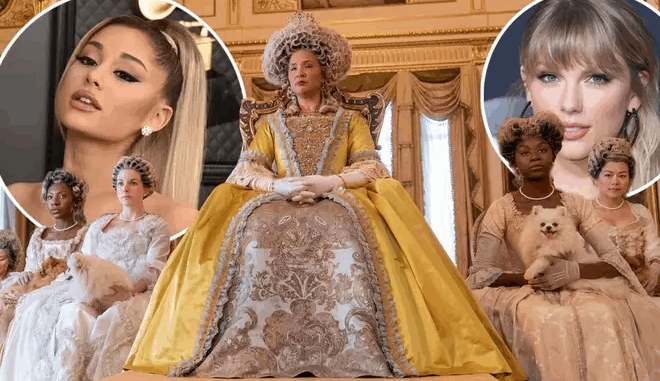
If you’ve ever watched Bridgerton, you know the music plays a powerful role in shaping the show’s emotional heartbeat. The sweeping ballrooms, lingering glances, stolen touches, heartbreaks, and confessions all feel richer because of the unique soundtrack: modern pop songs reimagined as classical orchestral pieces.
But how did this unusual musical style become one of the show’s most iconic elements?
It began with a creative idea: to blend the elegance of the 19th century with the energy of 21st-century pop culture. Instead of using traditional classical compositions, the creators commissioned string ensembles to reinterpret contemporary hits—Taylor Swift, Ariana Grande, Harry Styles, Billie Eilish, and more. These songs maintain their recognizable melodies but are transformed through violins, cellos, and harps.
The effect is magical. When you hear a familiar melody played by a classical ensemble, it triggers nostalgia while creating something entirely new. It bridges the gap between past and present, giving the show a fresh identity that sets it apart from other period dramas.
 Interestingly, the music is not chosen at random. Each song is selected to reflect a character’s emotional journey. For example, when Daphne enters society, the orchestra plays an elegant yet hopeful rendition of a modern love song—symbolizing her romantic optimism. During intense romantic scenes, Taylor Swift’s music appears in string form, turning fangirl joy into Regency drama.
Interestingly, the music is not chosen at random. Each song is selected to reflect a character’s emotional journey. For example, when Daphne enters society, the orchestra plays an elegant yet hopeful rendition of a modern love song—symbolizing her romantic optimism. During intense romantic scenes, Taylor Swift’s music appears in string form, turning fangirl joy into Regency drama.
One of the most memorable choices was the instrumental cover of “Wrecking Ball,” played during Kate and Anthony’s emotionally explosive scenes in Season 2. The lyrics—though unheard—match the raw, uncontrollable feelings between the two characters. Fans praised the selection as “perfectly devastating.”
Behind the scenes, the process of creating these covers is more complex than viewers realize. First, producers must obtain licenses to adapt each song. Then, composers rearrange the melodies to fit the show’s mood. Finally, live musicians record the tracks in a studio, often experimenting with tempo, vibrato, and instrumental layers until the piece feels “Regency enough.”
This meticulous process is why the soundtrack feels so seamless. The music enhances every moment—whether it’s a flirtatious dance, a scandalous reveal, or a heartbreak.
The series also introduced original orchestral compositions that blend modern emotion with classical structure. Composer Kris Bowers infuses warmth, longing, and tension into his pieces, making them instantly recognizable. Each couple has their own theme: Daphne and Simon’s is gentle and romantic, Kate and Anthony’s is fiery and dramatic, Colin and Penelope’s is soft and yearning. These musical themes allow viewers to feel the story before a single word is spoken.
Fans often say the music stays with them long after they finish an episode. Many listen to the soundtrack while studying, working, driving, or relaxing. It has become its own cultural phenomenon, inspiring playlists, TikTok edits, and fan-made remixes.
Ultimately, Bridgerton’s music is more than background sound—it is storytelling in its purest form. The fusion of classical and contemporary styles mirrors the show’s mission: to reimagine history with modern sensibilities.
Next time you rewatch a ballroom scene, close your eyes and listen carefully. The strings don’t just accompany the story—they guide it.
